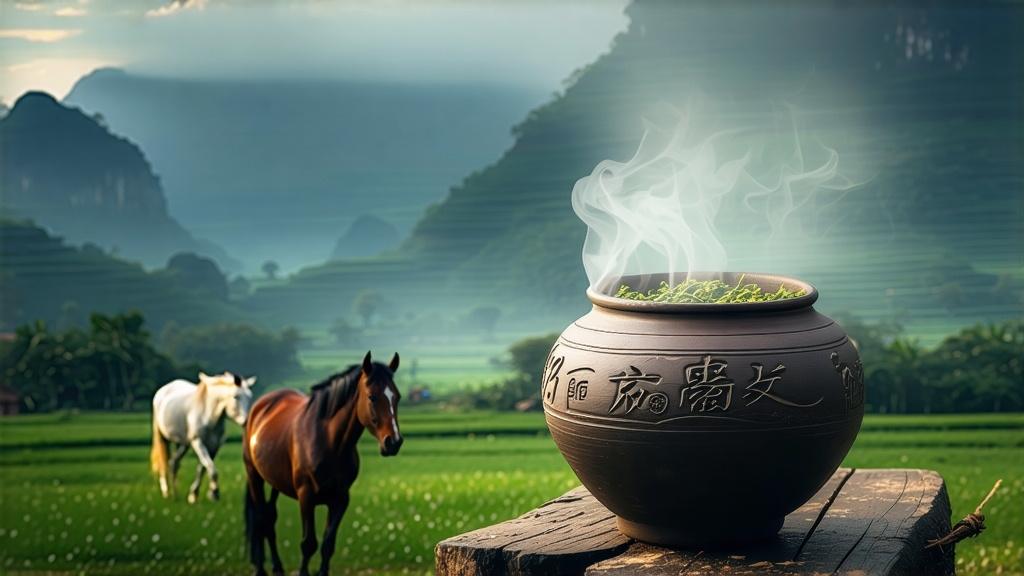
Tucked away in the humid, karst-pocked southwest of China, the small town of Liubao in Wuzhou, Guangxi, gave birth to a tea that once fueled the caravans of the Tea Horse Road and still quietly ferments in dark corners of bamboo baskets, waiting for the world to rediscover it. Liu Bao—literally “Six Forts”—is the least internationally famous yet most aromatically dramatic member of the dark tea (hei cha) family. While Pu-erh hogs the limelight, Liu Bao drifts like a smoky whisper through the memories of old tea porters, its earthy, betel-nut sweetness lingering longer than any campfire story.
Historical footprints
The earliest written record appears in the Jiaqing edition of the Wuzhou Gazetteer (1799), noting that “the tea of Liubao, pressed into square bricks, is exported via Guangzhou to Hong Kong and Malaya.” By the late Qing, Liu Bao had become the currency of coolies: one basket (about 50 kg) could buy passage from Qinzhou to Singapore. The British East India Company listed it as “black brick” in 1840s ledgers, blending it into breakfast teas to stretch more expensive Keemun. When the Japanese blockaded Yunnan during WWII, Liu Bao replaced Pu-erh in Hong Kong dim-sum parlors, cementing its reputation for cutting through pork fat better than any pu-erh ever could.
Micro-terroirs within 30 km
Purists recognize three micro-zones. The “true core” lies inside the original six Ming-dynasty forts—Yipeng, Tangping, etc.—where red clay and shale force the tea roots to dive three meters deep for minerals, yielding a signature “petrichor plus brown sugar” note. Just outside, the “outer core” terraces at 300–500 m produce a lighter, orchid-tinged liquor. Beyond the river, the “foothill” gardens give teas that age faster but lack the haunting depth. Farmers joke that the closer you are to the old drum tower, the more your tea will hum at night.
Crafting the darkness
Harvesting begins when the first cicada sings—usually late April—picking one bud with the fourth leaf, the “cicada leaf,” whose thicker cuticle survives the upcoming pummeling. After a brief outdoor withering, leaves are tossed in a wok at 280 °C for eight minutes; the kill-green is deliberately short, leaving enough active enzymes for later microbial drama. What follows is unique: a 30-minute “pile-fermentation” in bamboo crates lined with wet burlap. The leaves hit 55 °C, thermophilic fungi bloom, and the aroma flips from cut grass to warm sourdough. Next comes the “steam press” into 40 kg baskets woven from 2-year-old mao bamboo; the bamboo’s residual sugars act as micro-fuel for slow fermentation. Finally the baskets are stacked in riverside caves where humidity hovers at 85 % and the temperature never drops below 20 °C even in January. There the tea will sleep for a minimum of three years before it is legally allowed to be called Liu Bao.
The flavor chronology
A 2016 basket tasted in 2023 offers a timeline in one cup: years 1–2 smell of wet bark and jackfruit; years 3–5 develop the hallmark betel-nut note, a cooling camphor sweetness that tingles the tongue edges; years 6–12 deepen into dark honey, pipe tobacco and the scent of old Buddhist temples after rain; beyond 15 years the liquor turns garnet, texture becomes broth-thick, and a whisper of dried longan appears. The Chinese describe this evolution as “Chen Xiang”—the sunken aroma that rises from within, not from the surface.
Water, fire and clay
Liu Bao forgives beginners but rewards precision. Start with spring water at 100 °C; the high temperature shocks the compressed leaves awake. Use a 120 ml Yixing clay teapot seasoned only with Liu Bao—porous zisha clay traps the betel-nut molecule (methyl chavicol) and returns it in later infusions. Rinse for five seconds, then steep 8 s, 10 s, 15 s, 20 s, 30 s, adding five seconds thereafter. The fifth infusion is the “golden cup,” when tannins relax and sweetness peaks. If you must gongfu on the road,